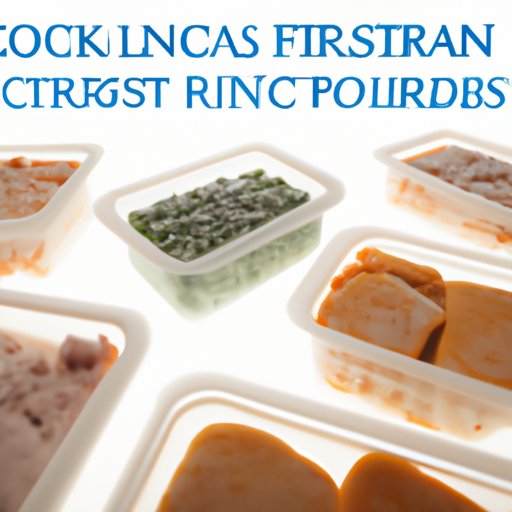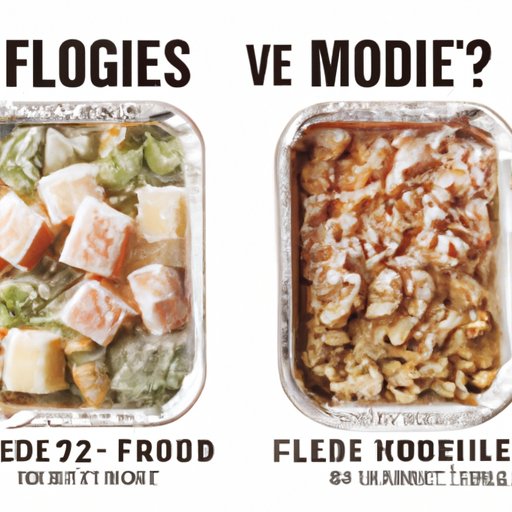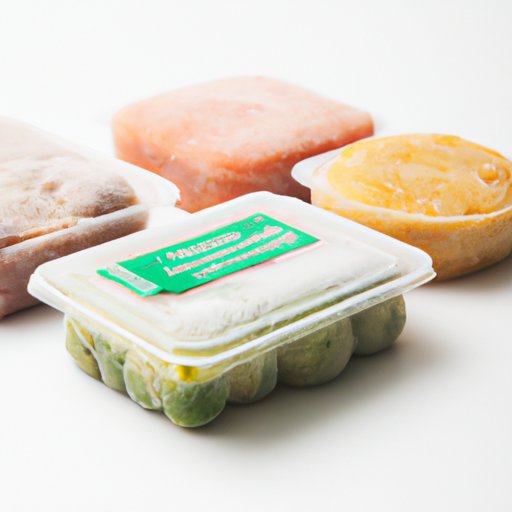Introduction
Frozen meals are a popular option for busy families looking for quick meal solutions. But are these meals actually healthy? In this article, we explore the nutritional benefits and drawbacks of frozen meals, compare different types of frozen meals, and provide tips on how to make healthy choices when selecting frozen meals.

Exploring the Nutritional Benefits and Drawbacks of Frozen Meals
Frozen meals can be a convenient way to get a hot meal on the table with minimal effort. But what about their nutritional content? Generally speaking, frozen meals vary in terms of their nutrient content, depending on the ingredients used and the brand of the product. Some frozen meals may contain added preservatives, sodium, and sugar levels that exceed recommended dietary allowances. Additionally, portion sizes of frozen meals can range from small to large, so it’s important to check the nutrition facts label to ensure you’re getting the right amount of food for your needs.
A Comparison of Frozen Meal Options: What to Look for When Choosing
When choosing frozen meals, it’s important to consider the type of meal, its nutrient content, and its price. There are many different types of frozen meals available, including pre-made meals, frozen entrees, frozen pizzas, frozen burritos, frozen soups, and more. The nutrient content of each type of meal can vary significantly, so it’s important to read the nutrition facts label and compare different brands before making a purchase. Additionally, prices of frozen meals can range from budget-friendly to expensive, so it’s important to consider your budget when selecting a frozen meal.

The Pros and Cons of Eating Frozen Meals
Eating frozen meals has both advantages and disadvantages. On the plus side, frozen meals are often quick and easy to prepare, and they can be a cost-effective way to feed your family. Additionally, some frozen meals can be high in nutrients, such as certain types of frozen fish fillets or frozen vegetables. On the other hand, some frozen meals can be high in sodium, preservatives, and added sugars, which can lead to health issues if eaten in excess. Additionally, some frozen meals may not provide enough calories or nutrients for an adult’s daily needs.
Are Frozen Meals a Healthy Option for Busy Families?
When selecting frozen meals, there are a few considerations to keep in mind. First, look for meals that are high in protein, fiber, vitamins, and minerals, and low in sodium, added sugars, and unhealthy fats. Additionally, it’s important to pay attention to portion sizes, as some frozen meals may be smaller than what is needed for an adult’s daily caloric needs. Finally, compare prices between different brands of frozen meals to find the best value.
Is It Possible to Eat Healthy with Frozen Meals?
It is possible to eat healthy with frozen meals, but it requires careful selection and portion control. When choosing frozen meals, look for ones that are high in nutrients and low in sodium, added sugars, and unhealthy fats. Additionally, be sure to check the portion size and compare prices between different brands. Additionally, it’s important to supplement frozen meals with fresh fruits and vegetables to ensure you’re getting all the essential nutrients your body needs.
For example, a healthy frozen meal could include a lean protein, such as grilled chicken or salmon, paired with a serving of steamed vegetables and a side of brown rice. This combination provides a balanced meal that is high in protein, fiber, and essential vitamins and minerals. Alternatively, a vegetarian option could include a veggie burger patty served with roasted sweet potatoes and steamed broccoli.
Conclusion
Frozen meals can be a convenient and cost-effective way to feed your family, but it’s important to make sure you’re choosing healthy options. When selecting frozen meals, look for ones that are high in protein, fiber, vitamins, and minerals, and low in sodium, added sugars, and unhealthy fats. Additionally, be sure to check the portion size and compare prices between different brands. With careful selection and portion control, it is possible to eat healthy with frozen meals.
(Note: Is this article not meeting your expectations? Do you have knowledge or insights to share? Unlock new opportunities and expand your reach by joining our authors team. Click Registration to join us and share your expertise with our readers.)
